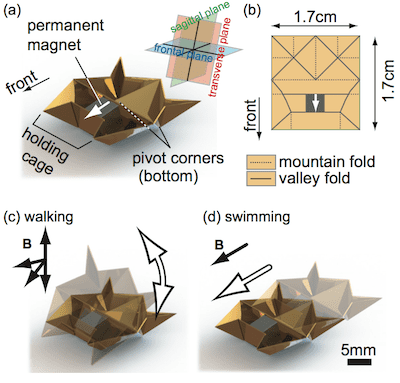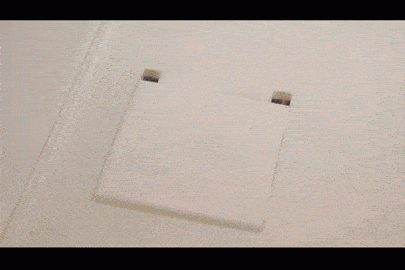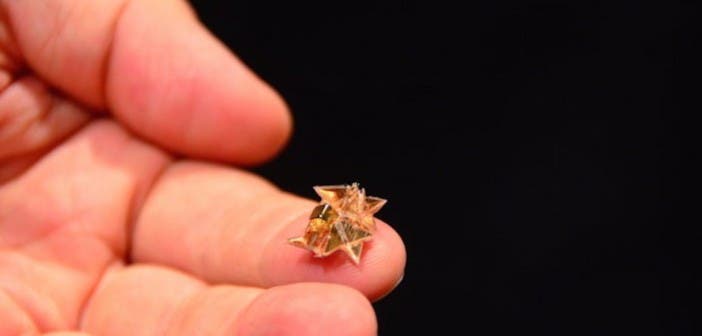At the International Conference on Robotics and Automation (ICRA) conference, a team from MIT, in collaboration with the Technische Universitat in Germany, presented an incredible origami bot that can perform various complex motor tasks. Weighing only 0.3 grams, the bot can scuttle at about 4 cm/sec to crawl up an arm, carry twice its load, dig through a pile of foam, climb a ramp or push a tiny puck along a planned trajectory. At the end, the researchers demonstrate how the entire bot (apart from its magnet) can be dissolved in acetone. Later on, it’s easy to imagine a similar origami bot traveling through your body where it performs various tasks like deliver a medical payload, diagnose for diseases or even perform surgery. It would be designed to be much smaller and with all its parts dissolvable inside the human body after a while or when emerged in a certain bodily solution.
In their aptly named paper, “An Untethered Miniature Origami Robot that Self-folds, Walks, Swims, and Degrades,” the researchers describe how the robot works. Two sets of magnets cycling on and off at around 15 Hz are what propel the robot: a neodymium magnet interacting with four electromagnetic coils. Due to its asymmetrical structure, the vibrations cause the bot to move in a certain direction. However, the bot starts off rather uniform and flat with the protruding magnet sitting at the center of the structure, surrounded by layers made out of either polystyrene or paper. The layers are separated by folds which are only visible as thin lines when the origami structure is flat. Once heated, however, the structure starts folding around the magnetic and dramatically changes its shape.
In the video below released by the researchers, you can catch a glimpse of the kind of tasks this tiny, but resourceful, bot can perform.
The most interesting part is that it can be dissolved. Particularly, in the example shown by the researchers, in acetone. However, it can be manufactured using materials that dissolve in other solutions as well. Ultimately, it might dissolve in the human body, without leaving any trace or causing unwanted side effects once its job is done.

Illustrations that show the origami bot’s main structural components, how it folds and modes of locomotion. Image: MIT











